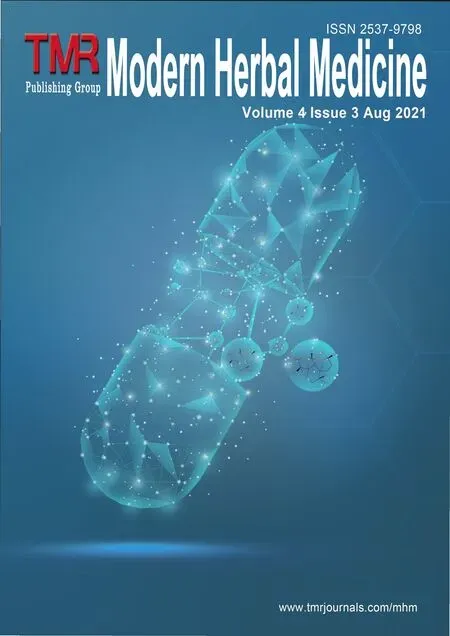Clinical research of traditional Chinese medicine under the influence of ICD-11:a new bridge and a new balance
Hongcai Shang
Dongzhimen Hospital,Beijing University of Chinese Medicine,Beijing,China.
On May 25,2019,the 72ndWorld Health Organization Assembly reviewed and approved the 11threvision of the International Classification of Diseases(ICD-11).ICD-11 features a new chapter of traditional medicine,incorporating 150 traditional Chinese medicine(TCM)diseases and 196 TCM syndromes.This is the first time that the TCM's understandings of diseases and syndromes were introduced into the authoritative international medical classification system and were presented to medical researchers and clinicians from different cultures and with various knowledge backgrounds.It is a landmark achievement for the TCM's move to go global.
TCM and Western medicine(WM)have completely different systems of defining diseases.Still,both medicines can use clinical research methods to verify their therapies' efficacy or to answer a clearly defined clinical question.Because WM's definition of diseases is more widely recognized and used,most TCM clinical researches formulated their research questions using the WM's way of disease definition or a combination of WM disease and TCM syndrome classification.Only a relatively small number of TCM clinical researches used TCM's definition of diseases in their research questions,and some researchers used TCM syndromes.What makes the situation more complicated is that a global consensus on the standardized definition and classification of TCM diseases and syndromes was lacking before the release of ICD-11.
However,the inconsistency between various TCM syndrome definitions had limited influence on the conduct of previous TCM clinical research.The main reason is that TCM clinical research was typically inspired by unsolved issues in clinical practice.There is a close association between TCM therapies,the pathogenesis and the precise diagnosis of the target patients presenting with the essential characteristics of a disease.This ensures that the research has a clear objective and is clinically feasible.A balance was kept when the nature of the disease was the focus.Clinical researchers accumulated experiences in recognizing the essential characteristics of a TCM disease in clinical practice;in the meantime,they defined diseases in their clinical research.Thus,TCM clinical research kept developing and clinical evidence was produced.
Despite ICD-11 will not take effect until January 2022,the inclusion of TCM disease and syndrome definitions in the mainstream medical system has gained momentum on the global scale.It will be a significant improvement in clinical research when researchers formulate their research questions using the ICD-11 classification.With ICD-11 as a new bridge,the global academia will have increased awareness and acceptance of TCM terminologies.Content on the efficacy of TCM may be presented in international journal articles even without extra explanations.
However,the 150 TCM diseases and 196 TCM syndromes are unable to fully describe the complex and constantly evolving nature of diseases in each patient.According to the recommendations of ICD-11,the use of TCM codes must be consistent with at least one of the WM codes in the previous 24 chapters.Then we will have to figure out how a TCM disease or syndrome correspond to a WM disease,and vise versa.This may break the established balance between the TCM clinical definition and the definition used in research,causing difficulties in clinical research design and reporting.We recognize the need to look at these new problems and find ways to improve the ICD.
The success of TCM in helping fight the epidemic will accelerate changes in the global health system.In fighting the coronavirus disease 2019(COVID-19)in 2020,TCM had shown its advantage to the world.However,the quality of TCM clinical research needs to be improved.
The release of ICD-11 has transformed TCM clinical research into a new chapter of development with great progresses and challenges.In this situation,a more widely recognized defining tool and a better system of definition are warranted.Whether or not it is possible to build a new bridge or keep a new balance,our aim is to investigate and verify the clinical advantages of TCM.We need to always respect the essential characteristics of TCM in clinical research.Just as what Academician Wang Yongyan of the Chinese Academy of Engineering commented on the academic work of the China Center for Evidence-Based Traditional Chinese Medicine(CCEBTCM):Evidence-based research in TCM needs to not only embrace diversity and multidisciplinary partnership,but also concepts and fields that directly correlate with the essential clinical characteristics of TCM.His remarks also echo the national TCM development strategy of "inheriting the essence while keeping integrity and innovation".
 TMR Modern Herbal Medicine2021年3期
TMR Modern Herbal Medicine2021年3期
- TMR Modern Herbal Medicine的其它文章
- Discussion on the role and practice of narrative medicine in China's COVlD-19 epidemic
- Effects and safety of Ding Kun Dan on lVF/lCSl-ET outcomes in patients with predicted poor ovarian response:A multicenter randomized clinical trial
- Combination of XianGui capsule and LCZ696 inhibits doxorubicininduced heart failure in mice
- Pharmaceutical care of a patient with antibiotic-associated encephalopathy
- Research of the clinical efficacy of Qiming Granule in treatment of diabetic nephropathy by meta-analysis
- Progress of ubiquitin-proteasome system in the pathophysiology of heart failure and the intervention of traditional Chinese medicine
